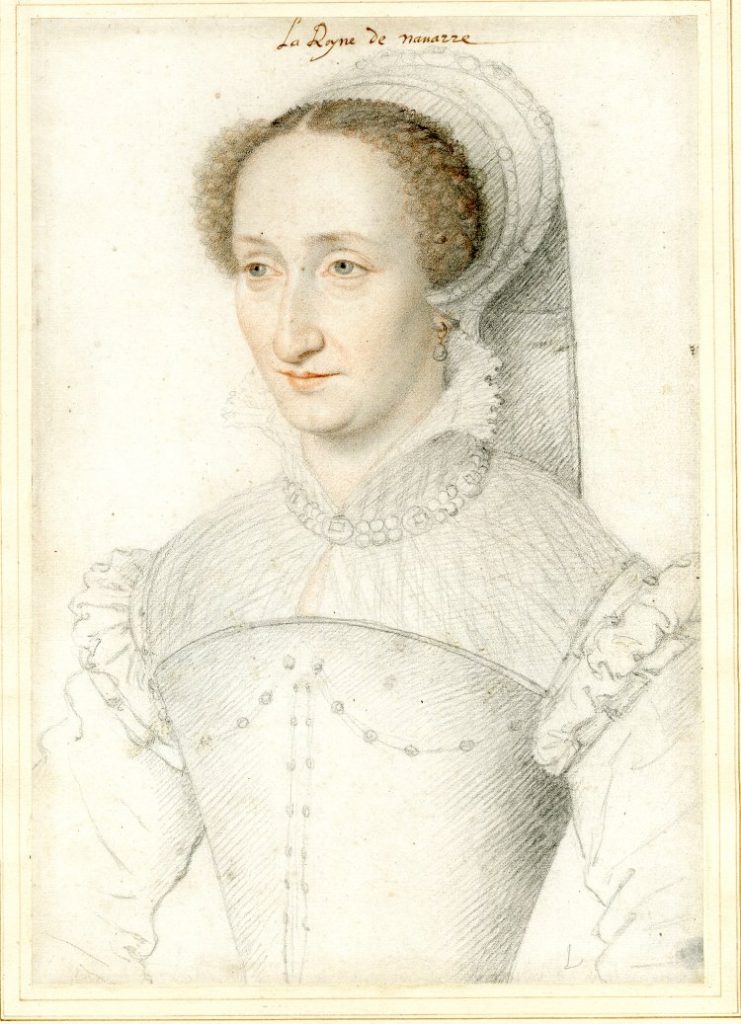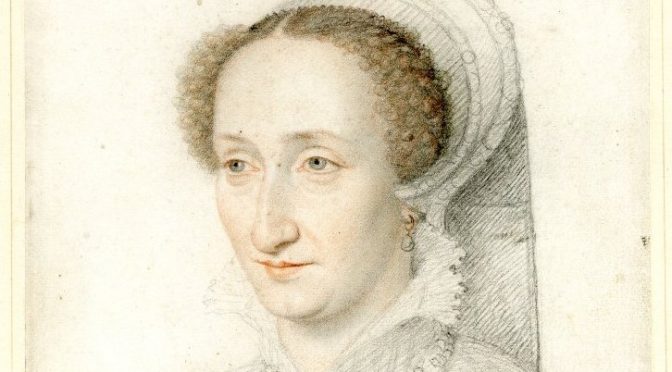The history of Europe, with its myriad kings, queens, and royal intrigue, is confusing and convoluted. There were some 19 Kings of France named Louis and at least 4 Henrys. The same Henry could be number III or IV depending on which title you consider and which period of his life you examine. On the Spanish side, there are at least 10 Phillips and Alfonsos. In the middle of all of this, both literally and figuratively, sat the Kingdom of Nafarroa. The last active ruler of the kingdom was Jeanne d’Albret (Joana Albretekoa in Basque). She ruled as Jeanne III or Juana III from 1555 to 1572.

- The girl that would become Queen of Nafarroa was born on November 16, 1528, to of Henry II, King of Navarre, and Marguerite of Angoulême. In 1512, the Iberian part of Nafarroa was conquered by Ferdinand II, leaving the kingdom that Henry II ruled over comprised of what is today Lower Navarre or Nafarroa Beherea. The final border between the two was established only a year after Jeanne was born, in 1529 by the Treaty of Cambrai.
- Jeanne’s position as the heir to the Kingdom of Navarre meant that she and her future were the pawns of powerful forces. While Charles V, Holy Roman Emperor, proposed that she marry his son, Philip, she was forced to marry William “the Rich,” Duke of Jülich-Cleves-Berg and the choice of the French king Francis I, her uncle. She was only 12 years old at the time. She protested her marriage, signing documents of protest and having to be physically carried to the alter. This marriage was annulled four years later when the alliance between Spain and France ended.
- In 1548, she married Antoine de Bourbon, with the goal of joining territories in France. In 1555, her father died, and Jeanne and Antoine became co-rulers of Nafarroa. They also ruled over the principality of Béarn. In fact, the seat of the Kingdom of Navarre, after the loss of Pamplona, was in Pau, the then-capital of Béarn. Their kingdom also included the territories of Ultrapuertos, Zuberoa, Albret, Armagnac, and Foix.
- Jeanne’s upbringing and the influence of her mother had inclined her toward religious reform and she converted Calvinism on Christmas Day 1560. In her attempts to bring the new religion to her subjects, she commissioned Joanes Leizarraga to do the first translation of the New Testament into Basque. Leizarraga’s translation was published in 1571, when Jeanne made the official religion of Nafarroa and Béarn Calvinism.
- She was viewed as a leader of the French Huguenot‘s, which placed her in the middle of the French Wars of Religion. Despite great pressure — including visits by Papal envoys — she never renounced her new religion. There was even a plot by the Pope to have her kidnapped and turned over to the Spanish Inquisition, a plot that was actually opposed by both the French and Spanish because they disliked the idea of the papacy interfering with their own affairs. The wars ended when Jeanne negotiated the Peace of Saint-Germain-en-Laye in 1570, which, amongst other things, allowed Protestants to hold public office in France and arranged the marriage between Jeanne’s son Henry and Marguerite de Valois, the sister of King Charles IX of France.
- Jeanne died suddenly not much later, in 1572. While some thought she may have been poisoned (through gloves provided by her perfumer) by her rival and Marguerite’s mother, Catherine de’ Medici, an autopsy indicated she had died of natural causes. When Henry III of France died in 1589, Jeanne’s son became King Henry IV of France. Under his reign, what remained of the Kingdom of Navarre was joined with the Kingdom of France, essentially ending the independence of the kingdom.
Primary sources: Estornés Zubizarreta, Idoia. Juana III de Navarra. Enciclopedia Auñamendi. Available at: https://aunamendi.eusko-ikaskuntza.eus/es/juana-iii-de-navarra/ar-64464/; Adot Lerga, Álvaro. Dinastía Albret. Enciclopedia Auñamendi. Available at: https://aunamendi.eusko-ikaskuntza.eus/es/dinastia-albret/ar-153853/; Jeanne d’Albret, Wikipedia.
Discover more from Buber's Basque Page
Subscribe to get the latest posts sent to your email.



La Navarre is beautiful province! the plot against Jeanne d’Albret ” opposed by both the French and Spanish because they disliked the idea of the papacy interfering with their own affairs”–what was true then is still true today–not just the papacy but political party, special interest and more. In my opinion, what I see and hear when I go home is that both sides are content to live separated but yet close to one another. When I go home, I feel that the contact between both borders is seamless. I would not want it any other way. Since 1620, the king of France is also the King of Navarre at perpetuity. Navarre is on both side of the border.
Our identity is the Pyrenees. La Catalogne is in the same situation!
we are both, Spanish and French–we are from the Pyrenees. How cool is that!!